How to Write a Blog Post That Capt
Why Reader Engagement Matters
Let’s be real—just getting someone to click on your blog post isn’t enough anymore. The internet is drowning in content. What separates a forgettable blog from one that sticks? Engagement. If readers aren’t hooked within the first few seconds, they bounce. And if they bounce, your message, product, or offer is lost in the digital void write.
Captivating blog posts don’t happen by accident. They’re crafted with purpose, empathy, and a clear understanding of your audience. If you want readers to not just read but feel your content—this guide is for you.
Know Your Audience
You can’t write a blog post that captivates if you don’t know who you’re trying to captivate. Think of it like telling a story around a campfire. You’d tailor it differently for kids than you would for adults, right? The same goes for blogging.
1.Create Reader Personas
Creating reader personas is like giving your audience a face and a backstory. It’s about humanizing your ideal reader. Ask yourself:
- How old are they?
- What are their interests?
- What challenges do they face?
- What are they searching for online?
For example, if your blog is about freelancing, your persona could be “Sarah, 29, a graphic designer transitioning from a 9-to-5 job, looking for income stability.”
Now you’re not writing to a crowd—you’re writing to Sarah.
2. Understand Their Pain Points
Dig deeper than demographics. What keeps your audience up at night? What frustrations are they Googling solutions for?
Use tools like:
- Reddit threads in your niche
- Quora questions
- Facebook group discussions
- Google’s “People Also Ask” section
When you understand their pain, you can position your blog post as the relief. That’s powerful.
Start with a Magnetic Headline
Your headline is the gateway drug to your content. If it’s boring, people won’t even read the first sentence. But if it’s magnetic? Boom—you’ve got their attention.
1.Use Power Words
Power words evoke emotion, urgency, and curiosity. They’re like espresso shots for your headlines. Some examples include:
- “Ultimate”
- “Proven”
- “Secret”
- “Epic”
- “Dead-Simple”
- “Insanely Effective”
Instead of:
“Tips for Better Writing”
Try:
“10 Insanely Effective Writing Tips That Work Like Magic”
Feel the difference?
2. Ask Questions or Make Bold Promises
Questions spark curiosity. They make the reader think, “Hey, I want to know the answer to that.”
Bold promises, on the other hand, offer a benefit so compelling that the reader has to click.
Examples:
- “Are You Making These 5 Blogging Mistakes?”
- “How I Grew My Blog to 100K Readers in 6 Months (Without Paid Ads)”
- “Want to Write Posts That Go Viral? Do This One Thing…”
Just make sure your content actually delivers on the promise. Clickbait only works once—then trust is gone.
Craft an Irresistible Introduction
A blog intro is your first impression—it can make or break whether someone keeps reading. You’ve got about 3 seconds to hook them. No pressure, right?
1. Hook Them with a Story or Fact
Start with a story. People love stories. They pull readers in, build connection, and set the tone. The trick? Make it relatable.
Example:
“Two years ago, I published a blog post that changed everything. Zero SEO. Zero promotion. Just me, a laptop, and a late-night caffeine binge. That post brought in 50K views in a week.”
If stories aren’t your thing, lead with a surprising or bold fact.
Example:
“Did you know that 43% of readers skim blog posts instead of reading them word for word? If your introduction doesn’t grab them instantly, they’re gone.”
2. Preview What’s Coming
Once you’ve got their attention, don’t let it drift. Give them a sneak peek at what they’ll learn.
“In this post, I’ll show you how to craft an opening that hooks your audience, structure your content like a pro, and write like you’re talking to a friend. Let’s make your words unforgettable.”
Let readers know they’re in the right place, and you’ve got value in store.
Structure Your Content for Readability
Walls of text? Hard pass. If your content looks hard to read, no one will bother. Humans are scanners—we want info fast and easy to digest.
1. Use Subheadings and Bullet Points
Subheadings break up text, guide the reader, and improve SEO. They also make it easier to skim (because let’s be honest, most people don’t read top to bottom anymore).
Think of subheadings like road signs on a highway. Without them, it’s just chaos.
Bullet points? Perfect for lists, steps, or takeaways. Like this:
- They improve flow
- Help readers scan content
- Add visual breathing room
- Make your posts look more organized
Use them wisely, and your posts will go from overwhelming to digestible in seconds.
2. Keep Paragraphs Short and Punchy
Say goodbye to high school essay-style blocks of text. Online, short is sweet.
- Stick to 1–3 sentence paragraphs.
- Use line breaks generously.
- Mix sentence lengths to create rhythm.
It’s about making the experience of reading feel effortless.
Use a Conversational Tone
People don’t want to be lectured—they want to connect. Writing in a conversational tone bridges the gap between formal and friendly, making your blog feel like a chat, not a textbook.
1. Write Like You Talk
The simplest trick? Read your post out loud. If it sounds stiff, rewrite it.
Instead of:
“One must consider numerous variables before constructing a well-formulated argument.”
Try:
“Before you start writing, there are a few things to think about.”
Use contractions, questions, humor—even emojis if that’s your vibe. 🎯
Ask yourself: Would I say this to a friend over coffee? If not, rewrite it.
2. Break the “Formal Wall”
Ditch the robot voice. Use:
- First-person (“I,” “we”)
- Second-person (“you”)
- Questions to spark thought
- Casual phrases (“let’s be real,” “here’s the deal”)
You’re not writing a college thesis—you’re connecting with real people.
Example:
“Ever feel like your blog post is boring? Like no one cares? Yep, been there. Let’s fix that.”
It’s raw. It’s real. And it works.
Conclusion: Make Every Word Count
Mastering these three techniques—compelling intros, clean structure, and conversational tone—isn’t optional if you want readers to stick around. It’s what transforms skimmers into subscribers, and visitors into fans.
Don’t worry about perfection. Just aim for connection. And always write like someone out there truly needs what you’re about to say—because someone does. more datails


